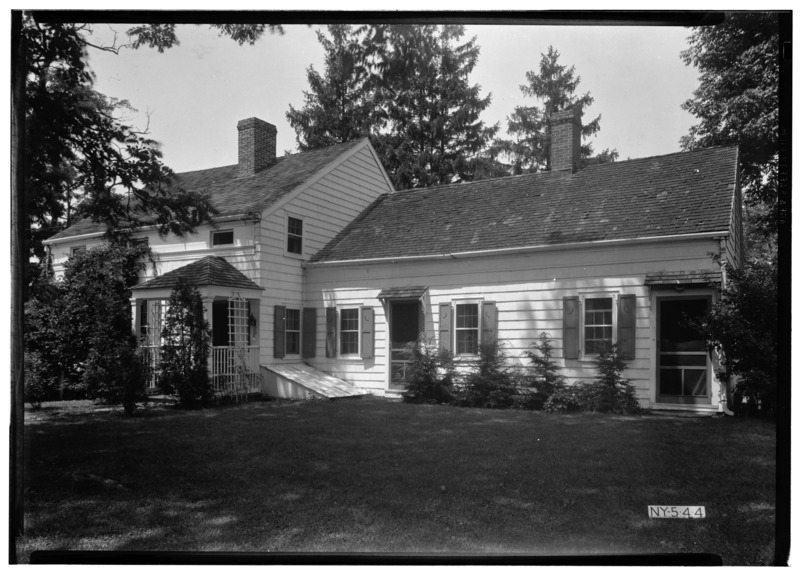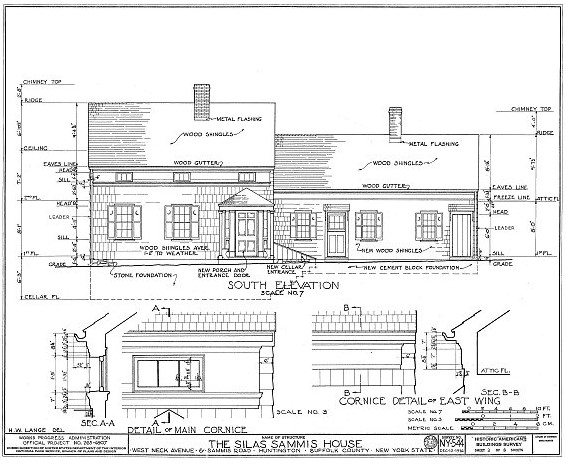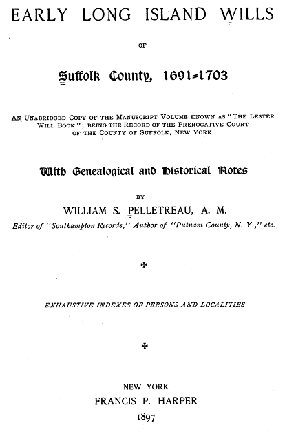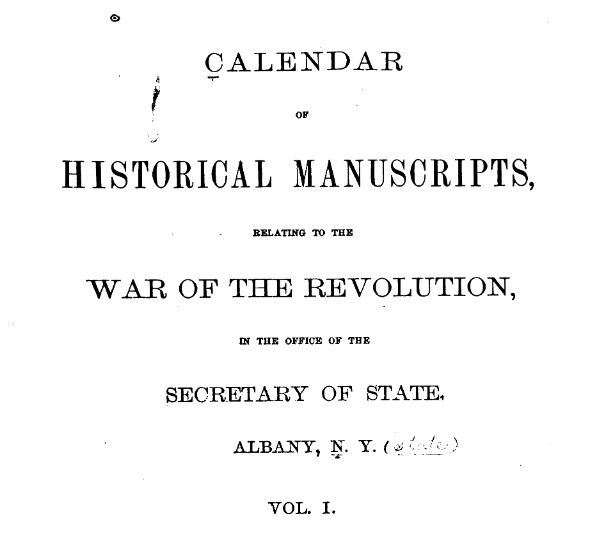Sammis Family History
My ancestor Richard Samwayes (Sammis) (b. 1617, England) is my 11x great-grandfather.| 13 Richard Samwayes (1617-1650) (b. England) m. Esther Horsford | |
| 12 John Richard Sammis (1643-1694) (b. Connecticut) m. Abigail Salmon Corey | |
| 11 Silas Richard Sammis (1676-1723) (b. Huntington, NY) m. Martha Cornish Corey | |
| 10 Silas Sammis Sr. (1701-1779) m. Ruth Platt Bryan | |
| 9 Silas Sammis Jr. (1731-1802) m. Ruth Scudder Rogers | 9 Alexander Sammis (1744-1809) m. Amy Gould |
| 8 Stephen Sammis (1765-1804) m. Nancy "Anna" Oakley | 8 Ezra Sammis (1783-1871) m. Anne Hawxhurst |
| 7 Henry Sammis (1799-1867) m. Hannah Phillips | 7 Jesse Hawxhurst Sammis (1812-1975) m. Margaret Ann Bennett |
| 6 Stephen Phillips Sammis (1833-1927) | m. 6 Ann Eliza Sammis (1838-1889) |
| 5 Myron Augustus Sammis (1862-1927) m. Mary Elizabeth Smith | |
| 4 Blanche Elizabeth Sammis (1893-1961) m. Arthur Henry Poole | |
| 3 Mildred Blanche Poole (1921-1992) m. Robert Henning Nelson | |
| 2 My father Peter | |
| 1 Myself, Brooke | |
Sammis History, from 1617
The following research is courtesy of Robert Rohrberg.Richard Samwayes (1617-1650): Immigrated to the Massachusetts Bay Colony in 1638 from Dorchester, England. He was a deed clerk and land agent in Windsor, CT, where he died intestate and his will was probated and his $110.06 estate paid to his family. His wife was Esther Horsford, daughter of Puritan Reverend William Horsford who immigrated with Richard to America.
John Richard Sammis, (1643-1694): Moved to Southhold, Long Island, in 1658 along with other Massachusetts Bay Colony settlers who were attracted to the vacant land of eastern Long Island outside of the direct control of the Dutch Governor of New Amsterdam and away from the Puritan religiosity of the New England Colonies. One of the early settlers of Huntington, LI, after he re-located from Southhold, LI, he moved with his wife, mother and two sisters to buy a house and lot on January 10, 1663. Owned farm #1 of ten farms in the new town of Huntington by 1672. From then until 1694 he acquired land in a series of purchases and was active in many Huntington, LI town positions. His wife was Abigail Salmon Corey. SEE WILL.
Silas Richard Sammis, (1676-1723): He was a farmer and also a constable, Overseer of the Poor, and Selectman. His wife was Mary Cornish Corey.

The Silas Sammis House at West Neck Ave. and Sammis Rd. in Huntington, NY, was built in 1730 and is on the National Register of Historical Places. It is an intact example of settlement period architecture in Huntington.

Silas Sammis, (1731-1803): Silas inherited the Sammis farmhouse from his father. He, along with virtually all the citizens in the Town of Huntington, LI, signed the Articles of Association pledging allegiance to the Continental Congress in 1775. Then, when Huntington, LI, became a British Army garrison after the Battle of Long Island, Silas signed the new Articles of Association pledging fealty to the King of England along with everyone else to avoid having his property confiscated. While his sons David and Phillip had fought against the British Army in the Battle of Long Island as privates in the 3rd Regiment of Suffolk County militia, Silas was forced to reluctantly serve in the Huntington Militia Company of Captain Cornelius Conklin by British occupation authorities. Only by threats and fines were the British able to muster this militia to perform any local duties as sentiments of the rebellious citizens of Huntington, LI, remained with independence and the Continental Congress. All the more so as the British treated the town harshly, forcing labor and property from the citizens without hesitation or compensation. Silas Sammis filed $106.10 worth of claims for compensation, among them:"For 8 sheap stold, for 5 hogs stold, for carting for the servis (British Army), for working upon forts, $36""Forced working as a carpender for cornel Tomson fifteen days. Cartain too day with wagon timber, $12.10"After the surrender of Lord Cornwallis at Yorktown, VA, in 1783, a Board of Commissioners was set up by Sir Guy Carleton in New York to pay them. But the Board simply sailed away to England without ever meeting to consider them. Silas Sammis was never paid any of the $106.10 he claimed for his levied (stolen) property or the compulsory unpaid labor he was forced to provide the British Army. Silas and seven other men were also arrested by the Provost Marshall and tried for robbery on September 3, 1783, shortly before the British Army left Long Island. The verdict from the trial before the Provost Marshall: "those accused of robbery on Long Island subject to a fine of $100 sterling, each paid in fifteen days, or should his majesty's troops leave before that time and the fine not paid, 1000 lashes on the back with a cat-o'nine tails. Cornelius Carll, Esa Whitman, Silas Sammis, Jacob Lawrence put in provost but acquitted." Silas was appointed to many positions in the town administration of Huntington, LI, such as Collector, Overseer For The Poor, Constable, and repeatedly selected as Town Trustee throughout the 1780s. His wife was Ruth Scudder Rogers, a descendant of a William Rogers whose Uncle Thomas Rogers immigrated before him. Both Puritans, Thomas sailed from Holland on the Mayflower in 1620, and William from England on the Chartwell in 1632.
Stephen Sammis, (1765-1804): He was a farmer in Huntington, LI. Robert Nelson, a member of the Sammis family by marriage, always claimed that his genealogical research of the Sammis family showed that Stephen Sammis was hung as a traitor in 1804. But there is no extant proof to support this claim, and neither New York State nor the Federal Courts can provide documentary proof from the incomplete records of this period. His wife was Nancy Anna Oakley.
Henry Sammis, (1799-1867): Henry owned farmland in both Huntington, LI and Oyster Bay, LI, and was buried in Huntington. He bought shares in a Erie Canal "cargo syndicate" on July 8, 1825, with the payment "in person appearing before us of $300 in gold coin." These syndicates were sold by entrepreneurs to raise investment capital for barges, mules, equipment and employees, and paid handsome dividends to shareholders from shipping profits once the Erie Canal was completed in late 1825. His wife was Hannah Phillips from Albany, NY.
Stephen Phillips Sammis, (1833-1927): For 40 years, Stephen owned a harness making business employing eight harness makers in Huntington, LI. He was later a town councilman in Oyster Bay, L I. His wife was Ann Eliza Sammis, a 4th cousin.
Myron Augustus Sammis, 1862-1927: Named for the ancient Greek sculptor Myron and Emperor Augustus by his classically inspired parents, he was a US Customs Superintendent in the Port of NY. On the day of his return from a 1927 inspection trip to the Panama Canal, he died in his sleep without ever submitting his report of the trip. His wife was Mary Elizabeth Smith.
Silas Sammis Sr. and Jr., American Patriots, 1775
Both Silas Sammis, Sr. (1701-1779), and his son, Silas Sammis, Jr. (1731-1803), signed the 1775 Articles of Association in Huntington, NY. This was a prohibition of trade with Great Britain, and the signers became American Patriots who were at risk of punishment by British Authority. The Sammises signatures are recorded in "The Calendar of Historical Manuscripts Relating to the War of the Revolution, in the Office of the Secretary of State, Albany, N.Y. Vol. 1. (Albany: Weed, Parsons and Company, Printers. 1868.)" Their names can be found on page 52 under Huntington, Suffolk County, NY, on May 8, 1775.John Sammis' 1693 Will
John Sammis' will, 1693: From "Early Long Island Wills of Suffolk County, 1691-1703" by Pelletreau, William Smith, 1840-1918, Page 72-74 (PDF)The original source material: http://longislandgenealogy.com/EarlyWills/MainIndex.html
 In ye name of God Amen--I John Sammis* of ye town of Huntington upon Long Island within ye County of Suffolk & Province of York in America Yeoman being sick in body but having my perfect memory have made this my last Will & testamt. in manner & form following--
First--I give & bequeath my soul to God my maker & Redeemer and my body to ye Earth from whence I was taken and all my worldly endowments in manner & form following--
In ye name of God Amen--I John Sammis* of ye town of Huntington upon Long Island within ye County of Suffolk & Province of York in America Yeoman being sick in body but having my perfect memory have made this my last Will & testamt. in manner & form following--
First--I give & bequeath my soul to God my maker & Redeemer and my body to ye Earth from whence I was taken and all my worldly endowments in manner & form following--
lmprimis--I give & bequeath unto my son John all my lands at ye Cove unto ye new pasture with all ye meadow land that I have there belonging or appertaining to me & also one hundred pound right of commonage that I bought of Joseph Bayley of Huntington to remain to him & heirs for ever--ALso a young horse of 3 or 4 years & also a yoke of steers come three years old & one cow & a gun y was Hunrians & y gun that was Johns to one of my other sons & also a coverlid--
Item--I give & bequeath to my son Silas my dwelling house & so much of my orchard as specified from ye West End unto a White oak bush on ye West side of my barn & so across unto brook or end of ye fence of Epenetus Platt that turns to ye northward only Silas to allow his mother in law during her widowhood half of my dwelling house & half ye benefit of ye orchard and also half a hundred pound right of commonage & a yoke of steers 3 or 4 year old & a young horse comes two year old & a cow only my will is that my son Silas shall pay to his two youngest brother Isaac & David fifteen pounds a piece when they accomplish ye age of one and twenty years but if either chance to die them ye sd. fifteen pounds to be divided equally between yE surviving brethren also to Silas a square barrel gun--
Item--I give & bequeath unto two of my other sons Isaac & David what remains of my orchard & home lot equally to be divided between them only my Will is that David shall have that end where ye barn is & half a hundred pound right of Commonage each of them to my son David More one young cow come four year old & two steer or Bull calves an Iron pot that same from Southhold & a fire lock musket, more to my son Isaac two cows & a grey mare colt
Item--I give & bequeath to my son Jeremiah my new pasture at ye Cove which is on ye Easternmost side of ye West Neck with half a hundred pound right of commonage--
Item--All other of my lands in ye hills near my house improved laid out or granted I give & bequeath to my four sons Silas, David, Isaac & Jeremiah equally to be divided between them and wheras there is a spring in part of ye said lands my will is that either son shall have the benefit of ye water as well as his lands--Also my will is that these four sons shall have ye meadow land & swamp commonly called ye Millpond & every son ye benefit of ye way without let or hindrance one of another which Milpond is to be equally divided between ye last four nominated only my will is that my loving wife Mary Sammis shall enjoy ye said Milpond to her only use & commodity until my son Silas comes to age if she remain a widow and after two third of it until my son David comes to age is she continues unmarried else ye use thereof to whom it is given--Also I give & bequeath to my five sons John, Silas, David, Issac & Jeremiah all my meadow lands with all its rights & privileges that I have at our South as our records & my conveyances makes manifest equally to be divided amongst them and all lands & meadows aforesd to remain to them & their heirs forever--But if either or any chance to die without lawful issue then his or their part or parts to be divided amongst ye survivors--Also my will is that (they) have all my Smith tools and be bound apprenticed to a smith & my son David to a tailor & my desire is that my brother in laws Abram & Isaac Corey be helpful to these two of their nephews that they may be placed in sober families--
Item--I give & bequeath to my loving wife two feather beds that was hers & that ye girls lyeth on with its bed clothes thereto belonging--Also one third part of ye pewter & brass one chest one middling iron pot & one small pot more also four cows two oxen & my sorrel mare only her first colt my will is my son Isaac shall have & half of my sheep--
Item--I give & bequeath to my daughter Deborah one feather bed in ye chamber & bedclothes & bedstead & her mothers chest & all her mothers clothes & one third part of my pewter & brass & a great iron pot & two cows & my old horse & ten sheep--
Item--I give & bequeath to my daughter Hannah one feather bed y I lie on with all its furniture and whereas there is a legacy due my daughter in law Martha Corey containing five or six pounds which is to be paid of my estate not given when that is paid then all ye rest of my goods & chattels not given I give & bequeath to my five sons equally to be divided among them, for ye true performance of the same & everything therein contained I appoint & request my loving brethren in laws Richard Brush & Nathaniel Williams to me my overseers in trust to see all things done herein contained as my witness my hand & seal on this 28th day of Nov. in ye fifth year of William & Mary Anno Dom. 1693--
John Sammis [Seal]
Signed sealed & published in ye presence of
ABIELL TITUS
SAMUEL KETCHAM
JOSEPH BAYLYS
* John Sammis was one of the early settlers in Huntington and owned No. 1 of the ten farms. His children, John, born September 13, 1673; Silas, born November 2, 1676; Isaac, born March 14, (1684). His descendants are numerous.
